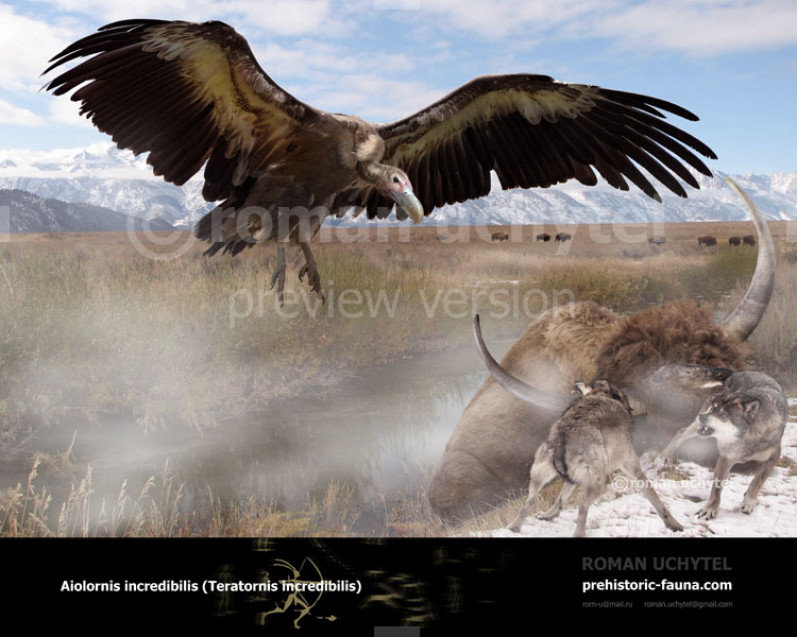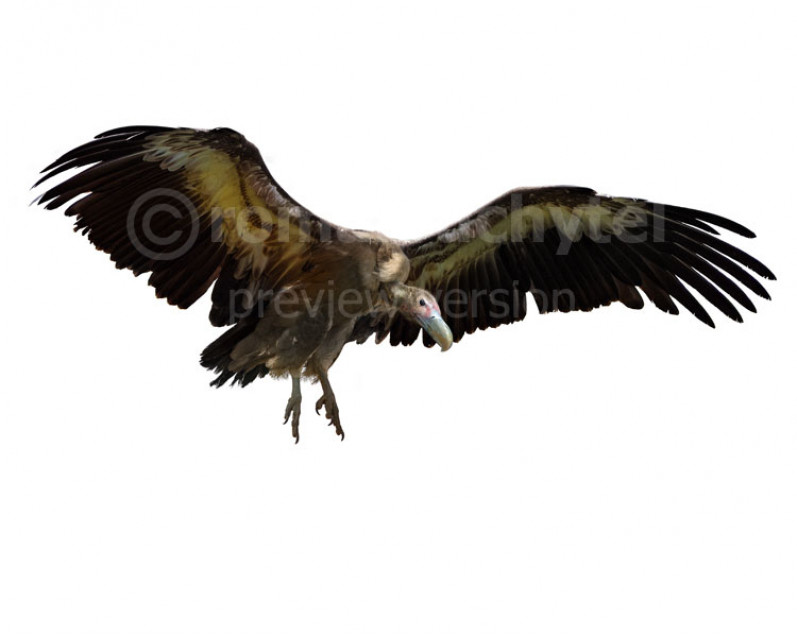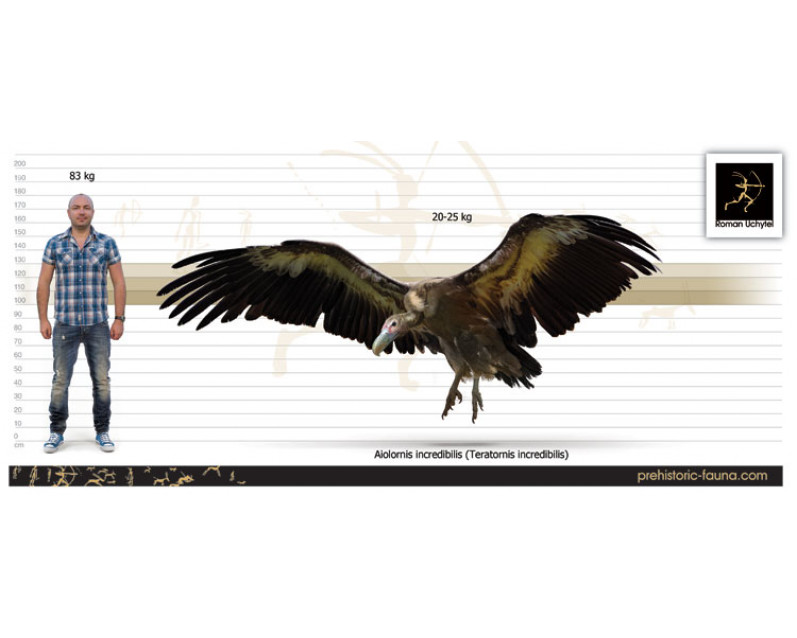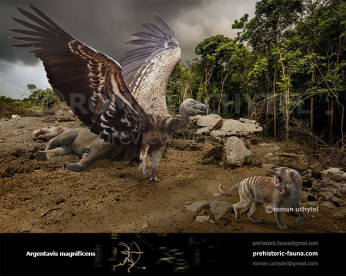Aiolornis incredibilis (Teratornis incredibilis)
283283Aiolornis incredibilis (Aiolornis incredibilis Howard, 1952)
Synonym: Teratornis incredibilis
Class: Aves
Order: Cathartiformes
Family: †Teratornithidae
Dimensions: The estimate span - 5 m, height - 130 сm, weight - 25 kg
Temporal range: Early Pliocene - Late Pleistocene of the North America (southwestern and western-central part of the USA)
Aiolornis incredibilis or Teratornis incredibilis, of the teratorn family, was the largest known North American flight-capable bird, with a wingspan of up to approximately 5 m and a huge, deep, powerful bill. The typical body mass of this bird was estimated to be 23 kg, significantly heavier than any extant flying bird.A. incredibilis presumably became extinct at the same time as the other megafauna in North America. It is sometimes called the giant condor because of its resemblance to the modern condors of California and South America, although it is bigger and in a different family. It is not well known but is quite similar to Teratornis merriami, although about 40% larger overall. Fossils have been found from the Early Pliocene to the Late Pleistocene in various locales in the southwestern and western-central part of the USA; it is not certain that all belong to the same species given the large time range and the lack of complete specimens.
From Wikipedia, the free encyclopedia
Aiolornis incredibilis (Aiolornis incredibilis Howard, 1952)
Synonym: Teratornis incredibilis
Class: Aves
Order: Cathartiformes
Family: †Teratornithidae
Dimensions: The estimate span - 5 m, height - 130 сm, weight - 25 kg
Temporal range: Early Pliocene - Late Pleistocene of the North America (southwestern and western-central part of the USA)
Aiolornis incredibilis or Teratornis incredibilis, of the teratorn family, was the largest known North American flight-capable bird, with a wingspan of up to approximately 5 m and a huge, deep, powerful bill. The typical body mass of this bird was estimated to be 23 kg, significantly heavier than any extant flying bird.A. incredibilis presumably became extinct at the same time as the other megafauna in North America. It is sometimes called the giant condor because of its resemblance to the modern condors of California and South America, although it is bigger and in a different family. It is not well known but is quite similar to Teratornis merriami, although about 40% larger overall. Fossils have been found from the Early Pliocene to the Late Pleistocene in various locales in the southwestern and western-central part of the USA; it is not certain that all belong to the same species given the large time range and the lack of complete specimens.
From Wikipedia, the free encyclopedia










